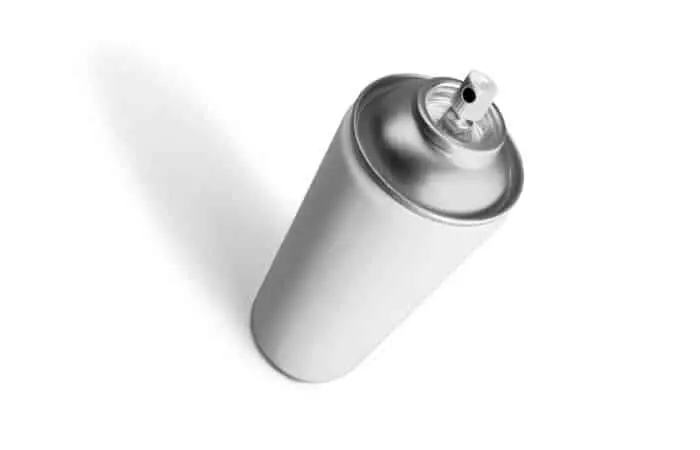You have two choices when it comes to waterproofing wool, you can either add back lanolin wax or use a nanoparticle waterproofing spray.

The first method involves washing the wool item in a mixture of soap and melted lanolin, while the second technique requires you to clean the item, spray it, then let it air dry.
Below is a detailed guide on how to apply both waterproofing solutions to wool fiber, so keep reading for more information.
Should You Waterproof Wool?
One of the best properties of wool is that it is highly water-resistant.
While they’re not totally hydrophobic, untreated wools with the fatty lanolin from the original animal still intact can be almost waterproof.
Even fine wools that have been treated can provide a certain level of protection.
Wool fibers are highly absorbent, which means they can soak up plenty of water before starting to leak through – about 20% of their weight to be more precise.
This is why sailors and fishermen have traditionally worn tightly-woven wool jackets and sweaters for protection in wet and cold conditions.
But what happens if wool gets too wet?

Wool fibers lose about a third of their strength when wet.
So if a wool garment becomes wet enough to leak through, you should avoid stretching it.
What you need to do in this case is take the garment off and lay it out flat instead of hanging it.
If there’s some sort of stress point bending the garment as it dries, such as the ridge of a narrow coat-hanger or the edge of a table, wool is likely to develop a permanent crease.
Ways to Waterproof Wool
Now that you understand why wool may require waterproofing, here’s a simple step-by-step guide on how you can do it:
Method 1: Add Back Lanolin Wax
The first technique you can try to make your wool garments waterproof is adding the natural lanolin wax back into the textile.
Not only will adding lanolin make your outerwear rain-resistant, but it’ll also make them more gentle on the skin because of the wax’s excellent moisturizing properties.

Additionally, lanolin wax can reduce fiber shedding, which will extend the lifespan of your garment.
It can smooth down the microscopic wool scales, make irritating coarser wools feel softer.
To perform this method, you’ll need the following items:
- Wool wash or laundry soap
- Lanolin wax
Now let’s move onto the steps:
1. Prepare the Washing Medium
- Start by filling a container with warm water. The container should be large enough to fit your garment.
- Then, add a suitable amount of wool wash or soap depending on the amount of wool you’re looking to waterproof. Using a wool wash or soap helps open up the cuticles of the fiber since wool alone can be a bit hydrophobic and soap can break the water tension.
2. Melt the Lanolin
- Next, grab a separate mixing cup and add about 1/2 a tablespoon of lanolin for every pound of wool with a cup of hot water.
- Mix the ingredients until the lanolin is fully melted.
3. Lanolize your Wool
- Time to “lanolize” your garment. Add the melted lanolin mixture to the container with the washing mixture.
- Give the liquids a good swish to blend them well.
- Next, submerge your wool in the container and make sure it gets wet all over. Be careful not to agitate the wool to avoid felting and shrinking.
- Allow your wool to soak for at least 15 to 20 minutes. If the water fully clears, this means that the wool has fully absorbed the lanolin in the basin and you may need to repeat the whole process.
4. Remove Excess Water and Dry
Finally, pat the excess water out of the wool (Do not wring the wool) and lay it flat to dry in the air. Note that after washing your wool several times, you may need to reapply lanolin.
Also Read: How To Waterproof Felt
Method 2: Apply Waterproofing Spray
The second technique you can try to make your wool items waterproof is applying a waterproofing spray.

To perform this method, you’ll need the following items:
- A quality waterproofing spray – there are various brands and types to choose from, but whatever you pick will do the same thing. The most important thing to check for is the included ingredients. Look for silicone or acrylic polymers as they can help resist water and prevent mold, mildew, as well as water-related deterioration.
Now let’s move onto the steps:
1. Prepare the Wool
- First, you need to clean the wool garment and let it fully dry.
- Once dry, hang up the wool item if possible. This will allow you to accurately spray it without accidentally spraying your hand or other surfaces.

2. Spray the Wool
- Hold the spray can about 6 to 8 inches (15 to 20 cm) away from the garment and apply a light, even coating. Make sure you cover every part of the garment, especially spots prone to getting wet.
- Avoid the temptation of saturating your wool. Instead, aim to create a thin coat that glistens once it settles on the surface.
- Be sure to work in a well-ventilated space to minimize your exposure to noxious fumes. Ideally, we recommend an outdoor area, but if this isn’t available, turning on an overhead fan should do the trick.
3. Remove Excess Spray
- Next, you should wipe off the excess spray using a clean microfiber cloth or hand towel. Go over the entire garment lightly, making sure you don’t apply too much pressure that you soak up the wet waterproofing spray – just a couple of quick dabs is enough.
- Do not use paper towels to dry your wool. The shedding fibers of the paper towel will get caught in the sticky spray and just become a part of the material.
4. Let the Wool Dry
- Allow the wool item to dry overnight. Although most sprays will dry to the touch within 20 to 30 minutes after application, it’s best to let them sit for 1 or 2 days before putting them to the test.
- If you decide to apply multiple coats, give each coat about 5 to 10 minutes to wick up before spraying on the next.
- Don’t try to cut the drying time short by using an external heat source such as a hairdryer or an open fire. This can interfere with the chemical process required for proper bonding, which may damage the garment or even pose a fire hazard.
5. Reapply the Spray
As a rule of thumb, waterproofing sprays aren’t as long-lasting as waxes, so you may need to touch up your wool items more often to keep yourself dry and maintain their condition.
During the winter or a rainy summer season, you’ll probably want to repeat the process after 7 or 8 outings. In drier climates, you’ll need to do less frequent treatments.
Wrap Up
There you have it, a complete guide on how to waterproof wool.
Even though it’s a naturally water-resisting fabric, waterproofing your wool items can help provide better protection and extend their lifespan.
Whether you choose to go with the lanolin or spray method is up to your take on ease of application and budget. Keep in mind, however, that waterproofing wool isn’t a one-time thing; you’ll need to redo the process every now and then.

